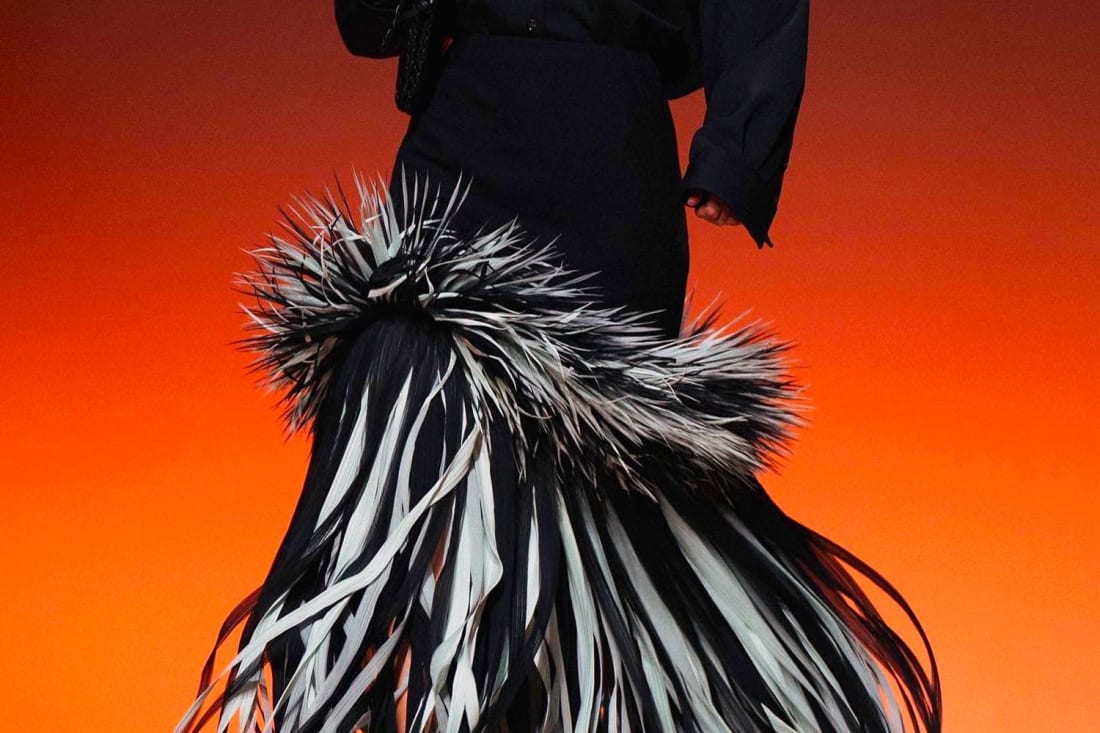Why did CMAT’s bum-revealing outfit spark such a backlash?
Bottom-exposing fashion has always been in style – but the uproar over the singer-songwriter’s Brits outfit reveals backwards attitudes to class and body image
Bottom-exposing fashion has always been in style – but the uproar over the singer-songwriter’s Brits outfit reveals backwards attitudes to class and body image
People have shown off their bums since the start of time. In fact, using clothing to accentuate your behind can be traced back to ancient Greece – the Motya Charioteer is a 5th century sculpture famed for its pert posterior, or what social media would call a bubble butt... And, while full-blown bare bottoms may not be a thing just yet in fashion, revealing your butt cleavage – part of your bum cheeks and the intergluteal cleft (a scientific way of saying arse crack) – is something we’ve seen a lot of through history.
Buttock cleavage was brought into the mainstream by Alexander McQueen, who debuted bumsters as part of his first collection in 1993. The low-rise, bum crack revealing trousers were a way of not only showcasing the bum, but also the lower back which the British designer believed to be the “most erotic part of anyone’s body”.
But when Irish singer-songwriter CMAT revealed a swooping, low-cut-at-the-back dress at the Brit Awards earlier this month, people were up in arms about it. The artist donned a feathered black dress designed by Sophie Lincoln, accessorised with prawn-shaped silver hair barrettes by Shrimps and tooth gems. “The backlash was crazy,” she said in an interview, noting that she’d been labelled an ‘attention-seeker’ (something that’s surely a given if you’re an artist dressing for a red carpet…)
Mia Maxwell, who dressed CMAT for the Brits, explains how this was on their mind when dressing the star for the occasion. “Styling to me is about communication,” Maxwell tells woo. “It’s using clothes to talk to an audience and to make people think or feel a certain kind of way. You know, it’s an important thing to explore because it probably wouldn’t have happened if she was very thin.”
Appearing on Radio 4’s Woman’s Hour, CMAT spoke about how society doesn’t have a problem with chest cleavage, so why should a bit of bum cleavage be any different? The singer-songwriter told host Emma Barnett: “I only think that my derrière caused a ruckus because it is larger. There were a lot of bits of crack shown in the early 2000s and stuff, but it didn’t necessarily cause a stir. I think mine did because I’m a size 14 as opposed to a size six, which I suppose is commonly what we do see on television.”
Lydia Kaye, a lecturer in fashion history and theory, and host of the Bodies in the Post podcast, believes the move is an act of rebellion. “The ideal, ‘beautiful’ body is sealed and contained,” she says. “We don’t think about bodily functions or body hair, but that’s the reality. Getting your bum out, in a way, is part of a rebellion. It’s using the body, which is gross – you know, we all s***, we all die, we all bleed, have rolls of fat, and hair – to rebel.”
“While bums can represent something sexual, they also represent the abject,” she adds. “To see real bodies embracing real, juicy, hairy bums is something new. It’s playful and accessible.” Both Maxwell and Kaye acknowledge the fact that fashion can take itself too seriously, but it should also be a way to experiment and have fun, without worrying about the practicalities.
But why does a builder’s bum trigger a visceral reaction when a bumster is high-fashion, and why did CMAT’s look bring on backlash? It’s possible that there’s an element of discrimination and classism at play, alongside the discussions about which types of bodies are allowed to be nude and which aren’t. You just have to look at the rampant sexualisation of Sydney Sweeney to see how little control women have over how their bodies are picked apart and discussed.
For stylist Maxwell, it was important that they showed how playful, camp, fun, daring and out-there CMAT is – and it’s fair to say they succeeded. “It’s another way for women to be cheeky and play around with their bodies,” they say. “I’m totally into it”.









